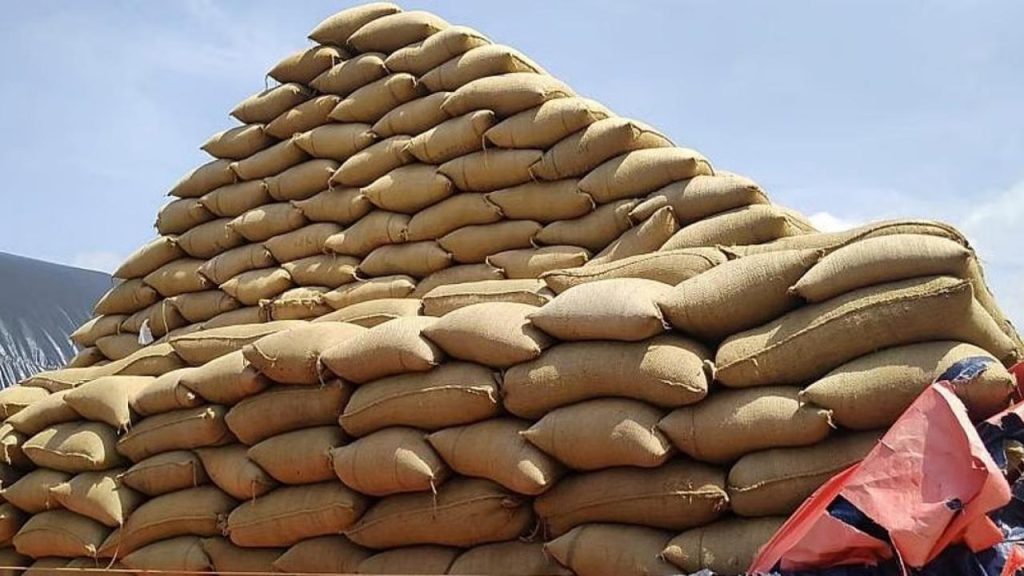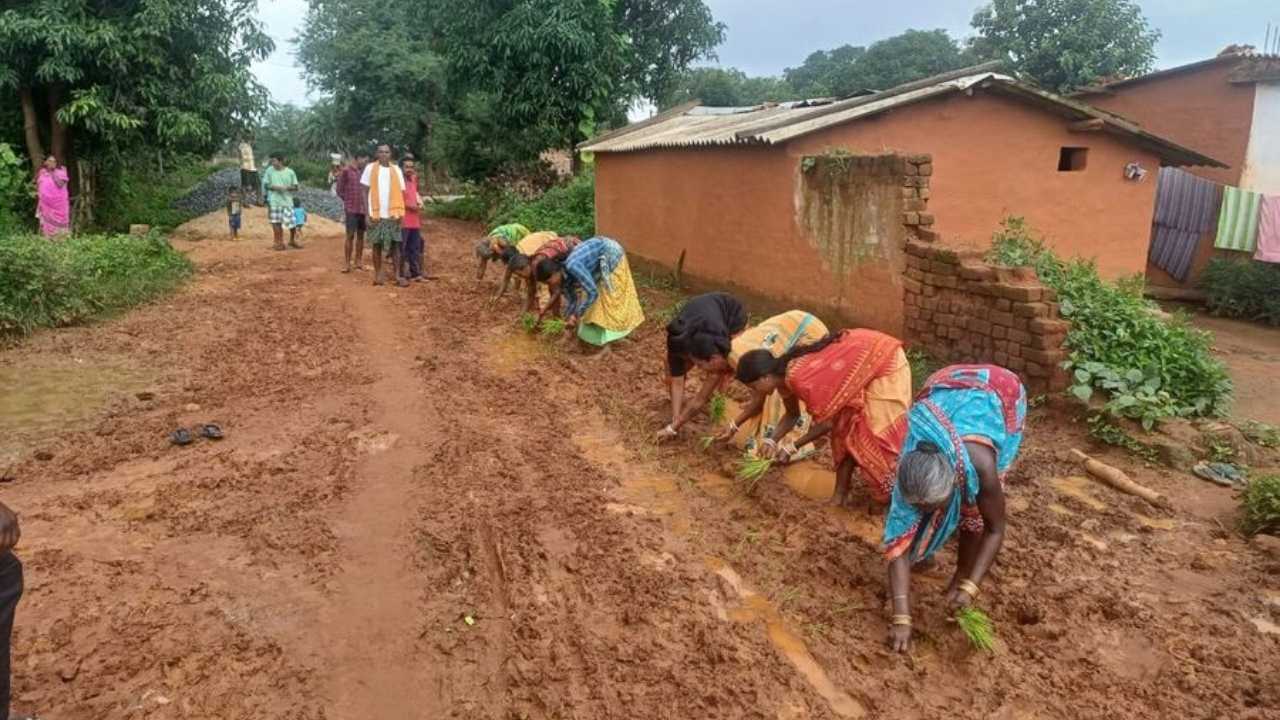In a move set to change the landscape of agricultural marketing in Odisha, the state government has announced plans to roll out 38 state-of-the-art mandis (agri-marketing yards) across 30 districts. This initiative aims to help farmers sell their paddy in a much more organized, efficient, and transparent manner. The project, with an investment of ₹300 crore, promises to address long-standing challenges such as delayed procurement, inadequate infrastructure, and distress sales.
For decades, Odisha’s farmers have struggled with a fragmented and sometimes chaotic paddy procurement process. But now, things are about to change. With the construction of these modern mandis, the state is taking a significant step to create a farmer-friendly environment where all agricultural activities, from buying and selling to sorting and weighing, can be done under one roof.

These mandis will not only ease the woes of paddy sale but will also ensure that farmers are protected from distress sales, where they are forced to sell their crops at lower prices due to poor facilities. The new system will provide a streamlined process that ensures fairness and transparency, which will be a win for both the farmers and the local economy.
Odisha’s State-of-the-Art Mandis
| Key Feature | Details |
|---|---|
| Number of Mandis | 38 model mandis across 30 districts |
| Investment | ₹300 crore |
| Facilities Included | Drinking water, restrooms, retail shops, parking, and eateries |
| Digital Integration | Modern digital systems for smooth transactions |
| Development Phases | First phase: 14 large, 17 medium, 7 small mandis |
| Farmer Support | Increased MSP of ₹3,100 per quintal + ₹800 input assistance |
For more detailed information, visit the official website.
Odisha’s plan to unveil 38 model mandis is a significant step towards revolutionizing agricultural marketing in the state. With better facilities, digital integration, and fair pricing, the new system promises to offer farmers a much-needed respite from the problems they’ve faced for years. The initiative not only aims to boost efficiency but also provides a transparent, farmer-friendly environment that could serve as a model for other states in India.
As the mandis continue to take shape, this initiative will undoubtedly make a big difference in the lives of farmers and help elevate the state’s agricultural market to new heights.

Why This is Big News for Odisha Farmers
If you’re not familiar with the paddy procurement system, it’s basically how the government buys paddy (rice) from farmers. In many places, this process can be a nightmare—long delays, poor infrastructure, and sometimes low prices, leaving farmers with no choice but to sell their crops at a loss. In Odisha, the new model mandis will address all of these issues.
Before the government’s announcement, many farmers had to sell their produce to middlemen at far lower prices than they should. The model mandis will help cut out those middlemen, allowing farmers to sell directly in a more organized market setting.
Here’s a step-by-step look at what makes this new system a game-changer:
Step 1: Integrated Infrastructure for Convenience
Each of the 38 mandis will come with modern infrastructure, including clean drinking water, restrooms, electricity, retail shops, and even parking spaces. For farmers who have to spend long hours at the mandi, these facilities will offer a much-needed sense of comfort and convenience. Plus, the addition of eateries run by women self-help groups (SHGs) ensures that both farmers and traders have access to fresh, affordable food while they’re at the mandi.
Step 2: Digital Integration for Transparency
Gone are the days of waiting in long queues or dealing with unclear transactions. These mandis will use upgraded digital systems to track every step of the paddy procurement process. From registration to weighing to payment, everything will be transparent and quick. This means farmers will know exactly how much they’re getting for their crops, and they can expect faster payments.
Step 3: Improved Pricing and Support for Farmers
One of the most exciting aspects of the new mandis is the increase in the Minimum Support Price (MSP) for paddy. The government has raised the MSP to ₹3,100 per quintal, giving farmers a better deal for their produce. Along with that, they’re also offering ₹800 per quintal as input assistance, ensuring farmers have some financial cushion to cover their costs.
By streamlining the process and improving prices, Odisha is not just fixing a broken system, but transforming its agricultural market into something that benefits everyone.
Step 4: Phased Development of Mandis
The construction of these mandis will happen in phases. The first phase will see the establishment of 14 large, 17 medium, and 7 small mandis. This staggered approach will ensure that the mandis are built based on agricultural activity in specific regions. As the project moves forward, more mandis will be constructed, and the system will be continuously improved.
The rollout will be completed by 2026, and it’s expected to have a significant impact on both the local economy and the lives of farmers across Odisha.
Addressing Farmers’ Concerns: How the Model Mandis Solve Long-Standing Issues
For years, farmers in Odisha have faced issues such as:
- Delayed procurement: Farmers often had to wait for months before their paddy was bought, leading to unnecessary stress and financial loss.
- Poor infrastructure: Many mandis were poorly equipped, with little to no facilities for farmers.
- Distress sale: Due to lack of proper facilities, farmers were forced to sell their paddy at throwaway prices to middlemen.
The introduction of these model mandis addresses these concerns head-on by providing an organized, efficient, and farmer-friendly environment. With better infrastructure and streamlined processes, the new mandis aim to eliminate the chaos and confusion that often plague traditional markets.
By moving to a digital-first system, the process of weighing, registering, and paying for paddy will be faster and more transparent. This ensures that no farmer is left behind and that their hard work is properly compensated.
Key Benefits of the New Mandi System
- Efficiency: Faster registration and payment processing will reduce waiting times.
- Transparency: Clear, traceable transactions will give farmers peace of mind.
- Fair Prices: The increase in MSP ensures that farmers receive a fair price for their crops.
- Support for Farmers: The added input assistance helps farmers cover their costs and reduces the burden of production.
- Improved Infrastructure: Modern amenities at mandis will make it a more comfortable environment for farmers to do business.
Odisha CM Majhi Pledges Full Coverage for Farmers in PM, CM KISAN Schemes
E-KYC Mandatory for Odisha Farmers to Continue Receiving Scheme Aid; Deadline Looms.
FAQs
1. What is the minimum support price (MSP) for paddy in Odisha now?
The MSP for paddy in Odisha has been increased to ₹3,100 per quintal as part of the state’s efforts to provide better financial support for farmers.
2. How many model mandis are being set up in Odisha?
A total of 38 state-of-the-art mandis will be set up across 30 districts in Odisha. This includes 14 large, 17 medium, and 7 small mandis in the first phase.
3. When will the mandis be completed?
The mandis are expected to be fully operational by 2026. Construction will occur in phases, with the first batch being launched in the coming months.
4. What facilities will be available at these mandis?
The model mandis will include drinking water, toilets, restrooms, retail shops, parking spaces, and eateries operated by women self-help groups (SHGs), providing a comprehensive support system for farmers.
5. How will the digital system help farmers?
The digital systems will streamline the registration, weighing, and payment processes, ensuring faster, transparent transactions.





